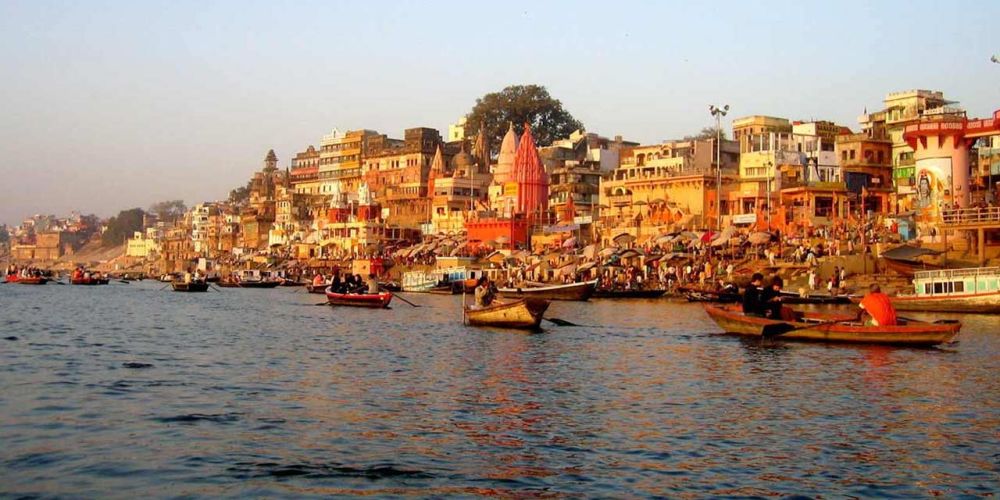

Varanasi, also known as Benares or Kashi, stands as one of the most ancient and culturally significant cities in India. Tourism in Varanasi is as historic as the city itself, which has been a center of spiritualism, learning, and civilization for thousands of years. Among the many Ghats of Varanasi, the Dashashwamedh Ghat holds a special place in the hearts of pilgrims and travelers alike.
The Dashashwamedh Ghat, situated on the banks of the river Ganga, has a story steeped in mythology and history. It is believed that Lord Brahma created this Ghat to welcome Lord Shiva and he sacrificed ten horses during Dasa-Ashwamedha yajna, which gave the Ghat its name. For centuries, the Ghat has been an integral part of the city’s life and a symbol of the eternal bond between Varanasi and the sacred river.
Tourism at Dashashwamedh Ghat has evolved significantly over centuries. It transitioned from serving mainly as a religious site to becoming a spot where tourists from all over the world congregate to witness the magnificence of the Ganga Aarti, a grand evening prayer ceremony. Recognized for its profound spiritual atmosphere, the Ghat has also attracted philosophers, poets, and thinkers, contributing to the rich tapestry of Varanasi's historical narrative.
The Ganga Aarti ceremony is an immersive experience that has grown in fame globally. Experienced priests perform rituals with lamps, incense, flowers, and chanting of mantras and Vedic hymns, creating an atmosphere of devotion that engulfs the visitors. This tradition has been one of the primary attractions for tourists visiting Dashashwamedh Ghat.
Tourism in Varanasi, and at Dashashwamedh Ghat by extension, has recently been following the trend of immersive cultural experiences. Tourists are seeking more than just sightseeing; they want to engage with the local culture, cuisine, and crafts. Activities like boat rides during sunrise and sunset, walking tours in the old city, and yoga sessions by the riverside are gaining popularity among the visitors.
The evolution of tourism has led to the development of various accommodations and facilities around Dashashwamedh Ghat. From luxurious heritage hotels to affordable guesthouses, there is something for every level of traveler. Restaurants serving local and international cuisines and shops selling handicrafts are commonplace, ensuring tourists get a well-rounded experience of Varanasi's offerings.
With increased tourism, there has been a strong emphasis on the preservation of Dashashwamedh Ghat. Clean-up drives and conservation programs have been initiated to maintain the sanctity and cleanliness of the river and its surroundings. The government and various NGOs are working to ensure that the growth in tourism does not come at the cost of the environment or the city’s historic legacy.
The story of Dashashwamedh Ghat and its significance to Varanasi’s tourism is a testament to the timeless allure of this spiritual city. As Varanasi continues to welcome visitors from around the world, Dashashwamedh Ghat remains a beacon of the city's deep-rooted traditions and a place where history and present-day worship coincide harmoniously.